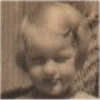 | Name: Margaret Elliott
Overview: Margaret Elliott`s newly-qualified local doctor diagnosed diabetes as soon as he walked through her front door - from the smell of acetone. Her family was poor but managed to pay for some medical care through a thrift club. Her parents did her injections for her and her husband did them after she married at 20. She was advised not to have children, but had 3 normal births and one caesarean. She attributes her good health to her husband`s care and a very strict diet. She has smoked 6 or 7 cigarettes a day since she was 14.
Hits=4 |
|
| 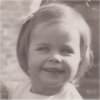 | Name: Joan B
Overview: Joan began to lose weight when she was three. Her doctor had never seen a child with diabetes and so failed to act until she was critically ill. When she recovered, she had to weigh every slice of bread, but was allowed extra wartime rations of cheese, meat and fish. She has been married to Clive since 1962 and has one son. She would like to have worked as a children`s nurse, but was advised that she wasn`t fit enough, and she was would like to have had more children, but had three miscarriages, which she attributes to diabetes.
There is also an interview with Joan`s husband, Clive.
Hits=3 |
|
| 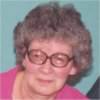 | Name: Betty
Overview: Betty`s first child, Nick, was the son of an American soldier who left England before Nick`s birth in December 1944. In 1961, Nick joined the RAF for 12 years and then returned home, aged 30, to live with his mother and work as a taxi driver. He liked sweet food before he developed diabetes around the age of 40 and found it hard at first to change his diet and give up smoking. He stopped taxi-driving when he was 54 because of failing eyesight and poor health and was on dialysis for about 3 years before he died in 2006.
Hits=2 |
|
| 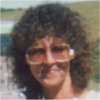 | Name: Mary Potter
Overview: Mary Potter`s daughter, Joanne, developed symptoms of diabetes in 1978, when she was five. Her GP refused to believe she had diabetes and Joanne nearly died. This traumatic beginning left a legacy of anxiety and anger. Mary noticed that another mother of a diabetic child was more laid-back than she was. She also noticed that when a niece was diagnosed around ten years later, there was much more specialist help and information available. Mary still sometimes accompanies Joanne to diabetic clinics. Joanne hates clinic visits because she feels that doctors treat her like a child and make her feel guilty.
There are also interviews with Mary Potter`s daughter, Joanne Pinfield, and with Joanne`s husband, Nick Pinfield.
Hits=2 |
|
|
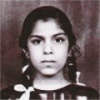 | Name: Bena
Overview: Bena was born in the Kigezi District of Uganda, the daughter of a wealthy businessman. She was diagnosed when nearly 12 and then shunned by children who thought diabetes was contagious. She lived on chapattis and spinach and a bitter vegetable juice thought to cure diabetes. When Idi Amin expelled Ugandan Asians in 1972, her family came to England, and she was delighted to be allowed to eat a wider range of food. She eventually married an Englishman and had two daughters. She works as an office administrator, in a social services department that supports disabled children.
There are also interviews with Bena`s daughter, Emma and her husband, Terry.
Hits=3 |
|
| 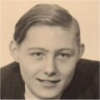 | Name: Patrick Grogan
Overview: Patrick Grogan was treated at King`s College Hospital by R.D. Lawrence (co-founder of the British Diabetes Association, now Diabetes UK) and he remembers Lawrence commenting on the amount of carbohydrate at a hospital Christmas party. He has always kept to a healthy diet, has had lots of exercise as a machine-tool fitter and maintenance worker, and has had no diabetic complications. He`s a member of NHS Concern and the West Midlands Pensioners Convention and says that taking an interest in improving society is what keeps him going.
Hits=2 |
|
|
 | Name: Joanne Pinfield
Overview: Joanne Pinfield was only 5 when she had the frightening experience of waking from a coma in hospital and she has found diabetes frightening for much of her life. At school she felt isolated by being the only person with diabetes. She left at 16 to work in a pottery with a sympathetic boss who helped her not to feel ashamed of diabetes, but then reverted to hiding her condition during 12 years working in a factory. Her father`s death in 2001 prompted her to take better care of herself. She married in 2002 and runs a limousine business with her husband.
There are also interviews with Joanne`s mother, Mary Potter, and husband, Nick Pinfield.
Hits=2 |
|
| 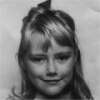 | Name: Clare
Overview: Clare was brought up in a remote Cornish hamlet. Although she developed Type 1 diabetes around the age of 5, she was not given insulin until about 4 years later and was instead kept on a near-starvation diet. She rebelled for many years and only began to take care of herself after she was registered blind in 1984. She went on to gain a second BA, MA and PhD and is now a university research fellow. She has been helped by coming to regard her lack of sight as `an issue around social equality as opposed to a medical issue`.
Hits=2 |
|
|
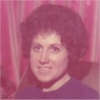 | Name: Shirley
Overview: Shirley left school at 16 and worked for the Inland Revenue until retirement. When she was diagnosed, her mother was very ashamed. Shirley looked after her parents until they died and then lived alone. She has had to cope alone with severe hypos, but says that living alone makes it easier to keep to a strict diet. She feels that her diet has made her healthier than she would have been if she hadn`t had diabetes. She has a low opinion of doctors, apart from a few consultants, but likes the group meetings held nowadays by specialist nurses.
Hits=1 |
|
| 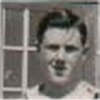 | Name: Ron Craythorne
Overview: Ron Craythorne worked all his life in the family business of carpentry and joinery but, when he retired, there was no-one to take over, so now he and his wife give shows for charity, showing people round the old workshop and selling the products of his woodturning. (He carved and painted the wooden fruit and bowls shown in his photo.) He has played team sports all his life and diabetes has caused him few problems. However, he knows of the problems it can cause, from members of the diabetic group he founded several years ago.
Hits=1 |
|
|
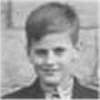 | Name: Peter
Overview: Peter`s father was a professor and both parents were well-informed about diabetes after his older brother was diagnosed in 1945. They spotted Peter`s symptoms early and at first he only needed four units of Lente insulin to last 24 hours. He was educated at Oxford and worked in the steel industry for several years. He is now a management consultant and has few problems associated with diabetes. He has recently remarried, after being widowed in 2003, and has a daughter with diabetes who is `much more able to cope with disturbances to her daily routine than I am`.
Hits=1 |
|
|  | Name: Gillian McGuinness
Overview: Gillian McGuinness studied human physiology at Manchester University before doing an eighteen-month Diploma in Dietetics at Hollings College in 1977, when there was a ‘dire shortage of dietitians`. She worked in NHS and private hospitals in Manchester and Bristol and then at Birmingham Children`s Hospital from 1990. She remembers that in the late 1970s, children with diabetes didn`t always grow very well or get full employment opportunities or take for granted that they would have children, whereas now she expects them to live long healthy lives and be able to achieve all the same things as people without diabetes.
Hits=1 |
|
|
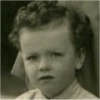 | Name: Simon Lawson
Overview: Simon Lawson`s father was 65 when he was born and his mother 44, and both died while he was in his teens. His unhappiness affected his public school education and he failed to get a place at Cambridge. Instead he worked at Sotheby`s in London and it was only after he married in 1971 that he obtained a degree and a doctorate – leading to his present work as an Oxford University librarian. He has warm memories of being treated by two eminent consultants – RD Lawrence and John Nabarro – and has always enjoyed knowing as much as possible about diabetes.
Hits=1 |
|
|  | Name: Patricia Torrens
Overview: Patricia Torrens was one of the earliest dietitians in the UK. She trained at Atholl Crescent domestic science college in Edinburgh and Edinburgh Royal Infirmary, and worked as an assistant dietitian in the part of St. Thomas`s Hospital that was evacuated to Surrey during the Second World War. After the war, she worked as a cook in the main kitchen at St. Thomas`s and as an assistant catering officer at Moorfields Eye Hospital. She was Chief Dietitian at Westminster Hospital from 1951-71 and became Dietetics Adviser to the Department of Health and Social Security from 1971-84.
Hits=1 |
|
|
 | Name: Hans Csucsmi
Overview: Hans Csucsmi`s early childhood in Vienna was disrupted by war: street-fighting; the arrival of Nazi troops; the army`s occupation of his school; evacuation to Hungary; and flight from the Russians at the end of the war. After returning to Vienna, he did well at school and worked in a fashion house before emigrating to England in 1955 to train as a mental nurse. He married a fellow trainee and had one son. While working as night manager of a hospital, he ate and smoked both day and night, and became very overweight. After diagnosis, he changed his lifestyle completely.
Hits=1 |
|
| 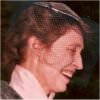 | Name: Beryl Smith
Overview: Beryl Smith first met children with diabetes when she was a student nurse and junior staff nurse at Birmingham Children`s Hospital from 1953 to 1957. She gave up nursing after she got married and didn`t encounter diabetes again until her own daughter, Catherine, was diagnosed in 1964, at the age of five. Catherine had so-called ‘brittle` diabetes, with frequent hypos – until she received two islet transplants in 2006/7. Beryl`s husband, David, developed Type 2 diabetes in 1983. At first he was on tablets, but was able to manage on diet alone after he lost four and a half stone.
Hits=1 |
|
|
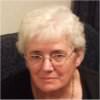 | Name: Lesley Prichards
Overview: Lesley`s daughter, Julie, was diagnosed with diabetes in 1978, aged nearly five, and she was in hospital for three weeks. Parents were not allowed to stay with their children, but Julie enjoyed hospital and decided then that she wanted to become a nurse. (She is now a Diabetes Research Nurse.) Meal times were rigid at first and Lesley and her husband still keep to those rigid times, though Julie does not. Later, while Julie was pregnant, she stayed with her parents whenever her husband worked nights - and Lesley feels that she`ll always have some involvement in her daughter`s diabetes.
Hits=1 |
|
| 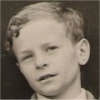 | Name: Philip
Overview: Philip was diagnosed aged 9 and considers that it`s better to get diabetes young, when the body is more adaptable. He attended a grammar school, and regrets that he often used diabetes as an excuse to miss school. He left at 16, but acquired more qualifications later and became a successful accountant. His diabetes was well controlled and caused little trouble for most of his life, until he began to get early morning hypos a few years ago. (He finds the term `hypo` unhelpful, since it`s used to refer to anything from a mild sensation to complete unconsciousness.)
Hits=1 |
|
|
 | Name: Gillian
Overview: Gillian was diagnosed when she was 23, while working as a
journalist in London. At the age of 26, a consultant advised her that if she
wanted children, it would be a good idea to have them soon, because "you`ve
got to consider whether you`re going to see them grow up". Her partner
didn`t want to be a father at that stage, so she decided to be a single
parent and has brought up two children on her own. Her daughter was
diagnosed with diabetes in 1999.
There is also an interview with Gillian`s son, Tom.
Hits=1 |
|
| 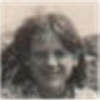 | Name: Mary
Overview: Mary`s father was a baker and her mother a factory worker. When she was diagnosed, the hospital suggested that they should buy a book on diabetes by R.D. Lawrence, but she doesn`t think they read it. She feels she was given very little information, and remembers thinking that her diabetes might disappear when she began to have periods at 15. She made little effort to control her diabetes until she went to a clinic in Oxford in 1983. She works as a podiatrist and reckons that about 75% of her patients have diabetes
Hits=1 |
|
|
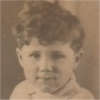 | Name: Allan Jones
Overview: Allan Jones` father was a miner with six children. They had little money but had to pay for insulin and equipment until the National Health Service was created in 1948. They couldn`t afford cotton wool and re-used needles until they were blunt. When Allan was 15 he got a job as a messenger on the railways but had to pass a medical before being promoted. He feared he would lose his job if his diabetes was discovered, so took with him a sample of his brother`s urine! He passed the medical and worked happily on the railways for 30 years.
Hits=1 |
|
|  | Name: James Jones
Overview: James Jones left school at 14 and worked with his father as a groundsman before joining the RAF in the Second World War, then becoming a sheet metal worker. When he collapsed at the age of 48, his confused conversation led him to be taken to the Warneford mental hospital and he was given electric shock treatment before being diagnosed with diabetes. He was married to his childhood sweetheart for 52 years and has three daughters. He enjoys flying in gliders, and has an ambition to try wing-walking on top of a bi-plane!
Hits=1 |
|
|
 | Name: Kushira Hackett
Overview: Kushira Hackett`s mother was white and her father black – from Guyana. Her parents split up when she was 5 and her mother later married a Jamaican. After diagnosis, the hospital staff explained to her mother about portions and gave her scales for weighing food, but gave no explanations to Kushira. Her mother also gave no explanations, and she thinks this led to her rebellion against diabetes, and to her leaving home aged 16. She had a period of homelessness, but later gained a law degree and now lives happily in Birmingham with her partner and two children.
Hits=1 |
|
| 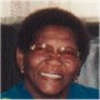 | Name: Agnes
Overview: Agnes` father worked in sugar cane fields in St. Kitts and her mother in the markets. Agnes worked as a maid until coming to England aged 22. She has been married twice and has five children. She controlled her diabetes with tablets, apart from a short spell on insulin while being treated for cancer. At the time of recording, she had recovered from cancer, but was about to go on insulin permanently. At 66, she still gets up at 4.30 every morning to work as a cleaning supervisor and mobile carer, and says her Christian faith sustains her.
Hits=1 |
|
|
 | Name: John Browning
Overview: John Browning`s father was an army officer and John always assumed that he would make his own career in the forces. He was diagnosed with diabetes at the age of 28, not long after getting married, and was invalided out of the army. He became a Conservative party agent and then a teacher. He still weighs his food and attributes his good health to his strict regime. He thinks one of the main improvements in his care has been to see the same specialist at each visit, instead of a different person every time.
Hits=1 |
|
| 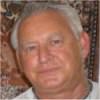 | Name: David M
Overview: David met Patsy while working as a tea-planter in India and came to England after their marriage in 1966, to escape the prejudice they`d encountered because Patsy was Anglo Indian. He worked as a prison officer, then prison governor until retirement at 60. Patsy developed diabetes in 1985 and they managed well until she had a stroke in 1999 and needed full-time care. He doesn`t want respite care, because he wouldn`t enjoy holidays without her, but he would like the Carer`s Allowance that was stopped when he got his pension, because `people who care for people…save the country a fortune`.
Hits=1 |
|
|
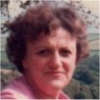 | Name: June Hill
Overview: June Hill had never eaten much sweet food and had always had plenty of exercise so her diagnosis brought little change and had no effect on her career as a teacher and then a nurse. She went on tablets in 1983, and was put on insulin in 1995, when she had a serious illness unconnected with diabetes. She took no interest in her own diabetes for many years until her diabetic mother became housebound. Then she began to inform herself about long-term implications. She is very fit and is enjoying her retirement.
There is also an interview with June Hill`s husband, Tony Hill
Hits=1 |
|
|
| Search returned 39 matches |